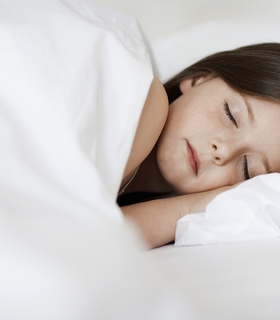Article at a Glance
- The bedtime pass is a card that allows your child one free trip out of their room or a visit from a parent after bedtime.
- Studies have shown that children who received the passes at bedtime cried out less frequently, settled down faster, and had fewer problems with leaving their bedrooms or having meltdowns.
- Doctors believe that one reason the pass is so successful is that it is acceptable to both parents and children.
If your child’s bedtime has turned into a battle of wills, you may be able to solve your woes with a simple bedtime pass.
The bedtime pass is a card that allows your child one free trip out of their room or a visit from a parent after bedtime. The bedtime pass works best for children ages 3 to 10 who are not struggling with other behavior problems.
Does the bedtime pass work?
According to many parents and studies, the bedtime pass is incredibly effective. Studies have shown that children who received the passes at bedtime cried out less frequently, settled down faster, and had fewer problems with leaving their bedrooms or having meltdowns.
When you first start to use the bedtime pass, children often test the system by venturing out of their rooms. But once they learn that you are serious, they generally settle down quickly and save their pass in case they need it later in the night.
Doctors believe that one reason the pass is so successful is that it is acceptable to both parents and children. Children feel like they have a measure of control and parents don’t feel like they are ignoring the needs of their children. Although studies have found that allowing children to cry it out is effective, in practice a lot of parents have a hard time sticking with it. The bedtime pass was found to be a lot more acceptable to parents because children suffered fewer and less serious meltdowns.
How to use the bedtime pass
- Explain to children that you understand it is hard for them to go to bed and that you have something that can help them. Explain to them how the bedtime pass works and make sure they understand that they can only use it for things like going to the bathroom, getting a drink of water, one last hug, or seeking comfort after a scary dream. The trips should be five minutes or less. Tell children that after they use their pass, they have to give it to you, and then stay quietly in their rooms the rest of the night.
- Children should be allowed to make their own pass if they want to. It is important that they feel a sense of ownership.
- Children should follow their normal bedtime routine and go to bed on time with a reminder of how the pass is to be used.
- Children are allowed to use the pass if they decide to, but they must turn it over to you. Remind them that it is now time to stay in their rooms quietly.
- After the pass is used, ignore any calling out even if it escalates. If your child leaves the bedroom, calmly return your child to bed without talking or making eye contact.
- Be sure to praise children when they have used the pass appropriately.
- If additional help is needed, parents can add incentives for successfully using the pass.
More Information:
Treating Bedtime Resistance with the Bedtime Pass: A Systematic Replication and Component Analysis with 3-Year-Olds
Share this article:
